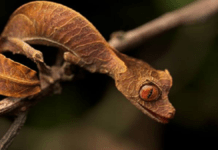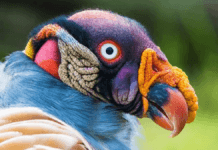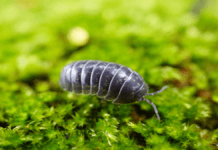If you ever visit Galapagos Islands in the Eastern Pacific, the blue-footed booby will be the most entertaining animal you see. As mentioned in the name, these birds have blue feet which play a key role in attracting people towards them. The ‘booby’ part in their names is reported as taken from a Spanish word ‘bobo’ which means ‘stupid’. There are lots of interesting facts to talk about these attractive seabirds. Would you like to know them? Just read this continuously as I’m going to bring all of them in here!
What kind of appearance do they have?
As mentioned above they have colorful blue feet. But remember only adults have those bright color blue feet. Once younger ones become mature, their feet turn into bright blue. There are relations of these blue-footed boobies’ that change their colors. You must have heard about the bird called marine iguana. They also change their colors. But they do it from what they eat. But there is nothing to do with the color change of blue-footed booby with their diets. It naturally happens with the maturity of their body.

Besides that blue-foot boobies have bluish-grey skin on their face. Their heads have pale cinnamon color and there is a white patch on the back of their neck. They have brown pointed long wings, central feathers on their tails, and white underparts. And when comparing male and female blue-footed boobies, female ones are bigger than their male ones.
Another way to differentiate males from females is their pupils. Female blue-footed boobies have larger pupils which look quite large. But male boobies have small pinpoint type pupils. All feet of the boobies are not equal. When they are mature, female boobies have deeper blue feet than male ones. If you ever get a chance to see a group of blue-footed boobies, try to differentiate males and females by comparing their feet!
What kind of habitats do they have?

Blue-footed boobies can be found in several geographic areas. You can find them on several islands on the western coast of tropical America, Northern South America, and Mexico. Galapagos Island is the best place to see blue-footed booby as it has around half of blue-footed booby breeding pair population in the world. You can see them sitting on any objects near the water and usually they have no fear of people. Like all other seabirds, blue-footed boobies nest on the land. They select small islands near their feeding area and live as groups. They lay their eggs also directly on the ground and a few breeding pairs lay eggs in the same area.
What do they eat?
Like all other seabirds, blue-footed boobies depend on marine food sources such as sardines, anchovies, flying fish, mackerel, other small fishes, and squids. They do fishing only during the daylight and often they fly above the water surface keeping its beak downward and looking for a fish. Blue-footed boobies are very popular for their amazing diving skills. They start diving up to 80 feet up in the air and can dive for a deep of 65 feet below the surface level. And also they have a unique ability that other boobies don’t have. They can catch fish by diving with a surface swimming position.
What are their special behaviors?

They have special behaviors related to their breeding process. They usually breed all the year around. When they are ready to breed, they have a special courtship dance which is very attractive to watch. At first, the male flies around their territory showing his blue feet to females. Females also show their feet to the male and the male selects a female, usually one that has brighter feet. Then the male points his bill towards the sky and gives a whistle. Then the female responds to it by groaning and then the mating happens.
When selecting a nest site, the partners work together and select a place in the male’s territory. The female usually has two to three eggs in each clutch. The nesting birds sleep together in their nest and use their feet to incubate eggs. They do it one parent at a time in turns. While one of them incubates other one goes to find food. Sometimes males destroy eggs when they have questions about paternity!
After about 4 days eggs hatch and sometimes female supports in the beginning. The older chick is usually bigger than other chicks and sometimes it attacks its siblings. These chicks stay under their mother’s feet for a month. During that period, parents feed them continuously. But if there is any shortage of food, they only feed the largest chick making him the only one to survive from siblings.

Sometimes you may see these blue-footed boobies in a position like smiling. But actually, they are not smiling and it is their cooling system! When the environment is too hot to bear, they open their mouths and flutter the skin of their throats. It helps them to cool out their body using this evaporative cooling process!

















